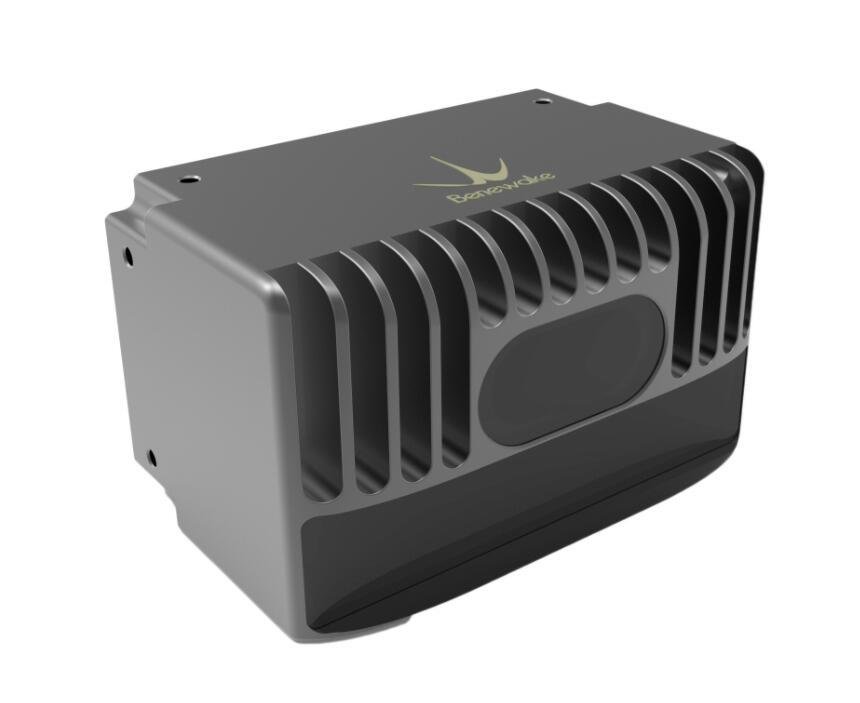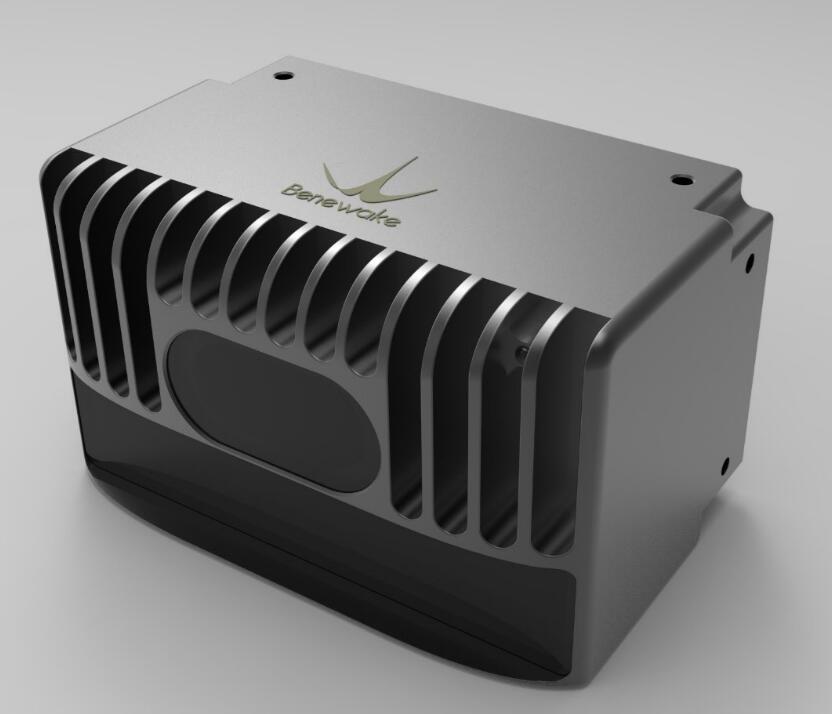| Model: | CE30-A |
|---|---|
| Brand: | Benewake |
| Origin: | Made In China |
| Category: | Electronics & Electricity / Electronic Components / Sense Organ |
| Label: | Solid State LiDAR , 3D LiDAR , obstacle detector |
| Price: |
US $999
/ pc
|
| Min. Order: | 1 pc |
Product Description
Benewake Solid State 3D LiDAR obstacle detector AGV automative vehicles anti-collision CE30-A
CE30-A is a solid-state infrared LiDAR which is developed based on the ToF principle. Equipped with its special hardware design, it could complete the measurement of wide horizontal FOV and output the grey and depth information at the same time.
With its specially optimized obstacle avoidance mode, the detecting area of interest could be set, and the single-point projection distance information of the nearest distance point could be transferred through CANBUS. Compared with single-line scanning LiDAR, CE30-A does not contain any rotating compartments, which could ensure the reliability of the long-time work and a wider vertical detecting range.
Table 1 CE30-A Specification
| Parameter | Typical Value |
| Method | Time of flight |
| Peak Wavelength | 850nm |
| FoV | 132*9 degree |
| Pixel Resolution | 320*24 |
| Frame Rate | 20fps |
| Ranging Resolution | 1cm |
| Detecting Range | 0.1~4m |
| Repeatability(1σ) | ≤3cm |
| Accuracy | ≤5cm |
| Ambient Light Resistance | 60klux |
| Data Interface | CAN |
| Operating Temperature | 0~50ºC |
| Supply Voltage | DC 12V(≥2A) |
| Power Consumption | ≤4.5W |
| Dimensions | 79*47*50mm |
| Enclosure Rating | IP65 |
| Eye Safety Class | Risk group 0 in accordance with EN 62471 |
| Weight | 216g |
1.Principle of RangingThe ranging principle of CE30-A is based on Time of Flight (TOF). CE30-A emits modulated near-infrared light, which will be reflected by the object and received by CE30-A again. CE30-A calculates the phase difference and time difference between the emitted and received light, which will be further converted to the clearance of the shot scene.
Figure 1. Schematic Diagram of CE30-A Detecting Range
Figure 2. Illustration of CE30-A Detecting area. Compared with single-line LiDAR, CE30-A has a wider vertical FOV and therefore is able to identify obstacles in front.
Figure 3 Illustration of Real Detecting Area; Depth image (left) and corresponding grey image (right). In the practical use, some rod-type objects are clearly visible (such as table leg).
Figure 4 - Application in obstacle avoidance mode. Compared with the single horizontal detection of the 2D Scan LiDAR (Check the red line), the CE30-A can better avoid the low obstacles on the ground.
On the working mode, CE30-A could detect all positions within the detecting range (within the detecting FOV) and return the distance information. Results of distance and detecting area are shown in Figure 5.
Figure 5 Illustration of Detecting Range and Area
The farthest detecting range of each angle has been optimized for general obstacle avoidance scenarios, which is different from regular detecting range. The schematic diagram is shown in Figure 6 (Customization is available for special requirements).
Figure 6. Optimized Detecting Area for Obstacle Avoidance Application
2.Description of Obstacle Avoidance
2.1.Obstacle Avoidance Mode
The obstacle avoidance mode of CE30-A is especially developed for the robot obstacle avoidance application. Under this mode, CE30-A will select out the most critical obstacle for the robots and provide the information to the robots.
The principle of the obstacle selection is as follows: CE30-A selects the nearest obstacle to LiDAR and handles detecting resources and computing resources in a centralized manner, to return the azimuth and vertical distance of the obstacle more precisely.
Among them, azimuth represents the angular deviation between the obstacle and the dead ahead position of LiDAR (0 for dead ahead position, negative for left and positive for right) and the degree of trajectory deflection that the robot requires to avoid the obstacle.
Vertical distance represents the distance from the obstacle to the robot (the robot is square at default and LiDAR is installed on the front surface of the robot) and the emergent level for the obstacle avoidance.
2.2.Setting Warning Region under Obstacle Avoidance Mode
In many cases, not all objectives within the detecting range deserve the warning or obstacle avoidance response of the robot. We set the function of warning zone under the obstacle avoidance mode. With the function, though CE30-A still detects the whole detecting range, it only sends warning signals and obstacle information to the robot when there are objectives in the warning area.
We could set the region of interest (ROI) by the width and depth:
Width refers to a width of a LiDAR-centered area extending symmetrically. It's usually the same as that of the robot, i.e. the width of the robot in the direction of forward motion.Depth refers to the vertical distance to the LiDAR, for which the front surface of LiDAR is set to be the zero plane. Usually, it corresponds to the distance that the robot needs to make brake response to obstacles.
Under the obstacle avoidance mode with ROI setting, CE30-A will preferentially trace the obstacles in the ROI. For example, Objective A inside the ROI and Objective B outside the ROI exist simultaneously. Even though Objective B is nearer to CE30-A than Objective A, CE30-A still returns the information of Objective A rather than Objective B.
Member Information
| Benewake CO., LTD | |
|---|---|
| Country/Region: | Beijing - China |
| Business Nature: | Manufacturer |
| Phone: | 13811773761 |
| Contact: | Siya (Sales Manager) |
| Last Online: | 10 Jul, 2017 |






